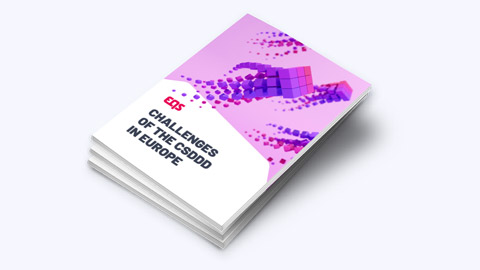How to use microlearning in compliance trainings
Microlearning is increasingly becoming an effective method to communicate compliance knowledge to employees.

For the longest time, compliance knowledge was considered as an area that was purely confined to the legal department of companies or more specifically, the Compliance Officer. However, organizations are increasingly realizing the importance of compliance trainings for all their employees and is acknowledging the crucial role compliance knowledge play in forming and subsequently sustaining the company culture.
Compliance is now an integral part of corporate culture and drive a company’s values and corporate behaviour. In this article, we look at microlearning approach and the benefits of applying this method to compliance trainings.
What is microlearning?
Microlearning is essentially a form of e-learning in which the information is conveyed to the trainees in small, bite-sized pieces, contrary to say, a three-day compliance training workshop. It can be defined as any learning component that is short, targeted and focused on one learning objective. In a microlearning format, the learning component typically lasts less than seven minutes and is action oriented, i.e. each component is focused on one specific learning outcome. This means that each learning component exists independently and answers a specific question. It ensures a great deal of flexibility to the learners, allowing them to not only learn at any time that individually suits them, but also to choose the devices that best suit their needs. This kind of learning technique can include various formats, notably short videos, or quizzes.
Research indicates that people retain more information when it is presented to them in simple, digestible chunks, rather than as huge chunks of information that eventually get lost. How far can microlearning be used as a method to drive compliance trainings in companies?
Let’s look at this with an example. An employee wants to offer a gift to a third party for their help in closing an important deal. Is this allowed according to the company policies, or will the employee be breaking any regulations if they go ahead with the plan? In normal circumstances, answers to similar questions would be found after hours of ruffling through endless pages of the company’s code of conduct.
But when such information is readily presented to the employees in a simplified format, it not only empowers the employee to take decisions, but also ensures that they do so by complying to the company rules.
How to use microlearning in compliance trainings?
While organizations are making compliance trainings mandatory for all employees, the method of these trainings are almost often not done in a manner in which the employees can successfully retain most of the information.
Organizations agree that investing on regular compliance trainings for the employees is beneficial in more ways than one, including safeguarding the organization from reputational damage in the event of a misconduct. Therefore, communicating the policies, rule and regulations have become the priority of organizations. But while taking part in compliance trainings is a mandatory task for the employees, this does not necessarily mean that the employees are naturally motivated.
More often for employees, attending compliance trainings are nothing but checking off a task from their to-do list. What this does is drastically influence how they respond to the training and how much information they end up retaining. Compliance trainings – if not done properly, runs the risk of lacking creativity and can sometimes even be tagged as moderately boring. This is not only because of the nature of the subject we are dealing with, but also have a lot to do with the format the trainings follow.
Increasingly, organizations are finding it challenging to make compliance trainings interesting and engaging for the employees. This is where the importance and scope of microlearning comes into the picture. Microlearning is increasingly becoming an effective method to communicate compliance knowledge to employees. Microlearning techniques can help enhance a company’s compliance trainings, generate more interest and participation during the training program, as well as create greater impact.
Benefits of including microlearning techniques
The purpose of incorporating microlearning techniques in compliance trainings is not only to increase employees’ engagement, but also to help increase retention rates and drive behavioral change.
In compliance trainings, microlearning-based approach can be incorporated in different ways for instance, either as a stand-alone training module or to compliment the main compliance training module. In the second way, it could be used to generate awareness before the actual training or can come at the end, to focus on information retention.
Learning is a process and a journey. The communication of content alone cannot create a change of consciousness in employees and motivate them to do the right thing. Compliance is about continuously developing skills and abilities in the area of compliance in the workforce. This means offering real learning experiences that include targeted practice and continuous learning cycles.
Microlearning tools help make guidelines and rules of conduct available to individual employees in such a way that they can make decisions themselves or quickly know where to turn for help and advice. For instance, a solution like the microlearning service of Rulebook solves the issue of accessible compliance trainings.
The platform is a web application that provides decision makers with information about compliance with business rules via various functions. The platform is integrated into the employee’s day-to-day work life, motivating them to adhere to rules. The employees can easily “look up” relevant information regarding which requirements apply and how they can be put into practice. This means that the company guidelines and code of conduct are digitally available in the platform in the form of use cases (question-answer combinations). With these use cases, additional content in the form of texts (e.g. conditions, technical notes), electronic documents and explanatory videos can be linked and displayed.
Characteristics of a microlearning service
The idea of a microlearning service is to combine different types of learning to make it engaging for the employees. Following are a few characters that microlearning services need to have, in order for it to be effective:
1. Explorative Learning
Much like a digital assistant, the platform must provide the rules intuitively with practical decision-making aids. Employees must become aware of more topics and scenarios as they begin to use the platform and subconsciously learn through specific situations.
2. Microlearning Campaigns
In short sequences, employees must be regularly addressed with specific questions that they have to answer. Participation, frequency, and results of the responses can be documented and evaluated.
3. Blended Learning
Different classroom training formats can be digitally supported with suitable microlearning tools. In this way, the experiences and insights of the participants can be interactively reflected and can also contribute to the improvement of the platform’s content.

Key principles of establishing an effective ABC programme




